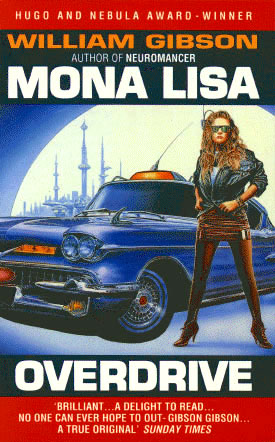


I mentioned this a little in my review of Pattern Recognition. I love how Gibson writes excellent women characters. Kumiko? Doesn’t look like Angie, but as the daughter of a powerful Japanese businessman, she is a target all the same. Mona is likewise a target-because she looks like Angie. But Angie Mitchell-daughter of the late Christopher Mitchell from the previous book-has risen to no small fame of her own, and her interesting abilities with the Sense/Net have made her a target. People have noticed, and they are trying to find out. Mona Lisa Overdrive reconciles these two universes: in the years since the events of Neuromancer, something strange has been happening in the matrix. In contrast, Count Zero is almost more grounded in the petty machinations of we lowly humans. Fondly remembered now for introducing cyberspace and cyberpunk, it’s an adventure across the world and into low-Earth orbit at the beck and call of an AI seeking to escape from itself. The result is a novel that bridges these two aspects of Gibson’s writing, providing a pivot around which his work revolves. Mona Lisa Overdrive mixes the legacy of the previous two Sprawl books with a corporate espionage–fuelled plot worthy of Spook Country. As I continue to read William Gibson’s novels, I continue to get a better idea of the novel he is trying to write. Sometimes, though, it feels like each novel is another installment in an iterative process designed to get at a central idea. In many cases this merely means the writer sticks to variations on a theme.

It’s common to accuse a writer of writing the same thing over again.


 0 kommentar(er)
0 kommentar(er)
